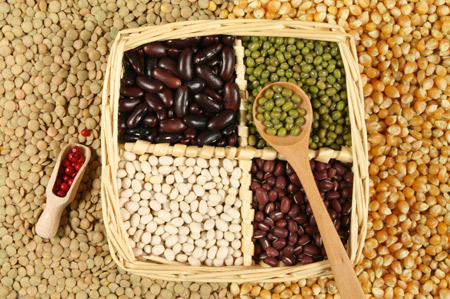 (Futures Magazine) – Over the last several years, U.S. corn and soybean farmers have ramped up total corn and soybean production significantly.
(Futures Magazine) – Over the last several years, U.S. corn and soybean farmers have ramped up total corn and soybean production significantly.
While in 2005 U.S. corn and bean acres totaled 153.8 million, by 2013 that number had climbed to 171.9 million.
This past March, the U.S. Department of Agriculture forecast soybean and corn acres to come in at an all-time record highs of 81.5 million and 91.7 million respectively. A look at last year’s numbers shows just how significant the increases are: 76.5 million for bean acres, and 95.4 million for corn.
The USDA purposefully releases its planting intentions report at the end of March to give the markets some time to react and “nudge” farmers into switching acres around so that the United States doesn’t end up with too many corn or too many bean acres. This year, corn acres were arguably too low and bean acres too high. Following this logic, we would have been looking for corn to rally relative to corn, encouraging any “swing acres” to go to corn rather than beans.
However, the exact opposite happened. The new crop corn/bean 2 by 1 spread went from trading near -$1.90 to dropping all the way down to below -$3.00 by the end of May. In addition, we had an extremely wet spring in northern corn/bean growing areas. Because corn needs a certain amount of growing degree units to reach maturity, every day that planting was delayed increased the risk of poor corn yields this year. This negative picture for corn was not helped by the fact that many growers in these northern areas still had a bad taste in their mouths from a year ago when the corn harvest was late and a glut of corn in those areas led to extremely weak local cash markets. So not only was there a price incentive to plant more soybeans this year, there were weather-related reasons also.
The historical average price for the nearby corn/soybean 2 by 1 spread is about -$1.70, meaning that the current new crop spread is about $1.30 below the average. If the recent price action we saw did the complete opposite of what many believed needed to happen – which was to see increased corn acres and reduced bean acres – there arguably is a fundamental reason for the ratio spread to move back to more normal levels and possibly beyond. After spending the last couple of weeks consolidating, I think there is reason to believe that corn might gain relative to soybeans both before and after the U.S. acreage report that’s slated for release at the end of June. Keep in mind that every penny move in the spread translates into a gain of $50.




